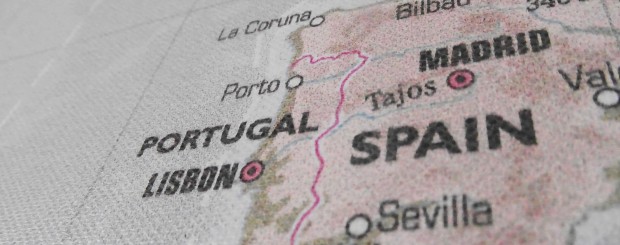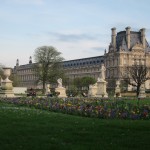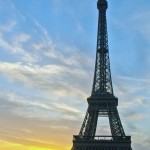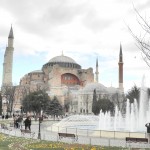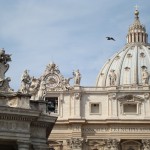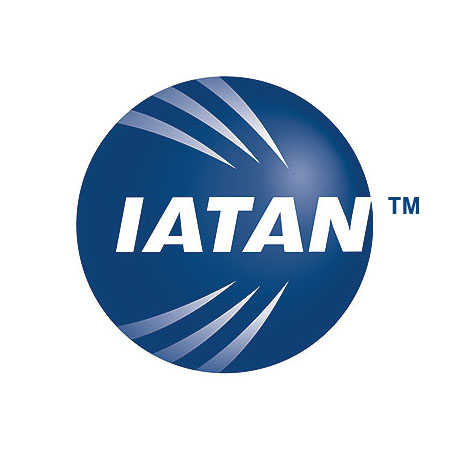Daily Itinerary
Day 1
Home City > Lisbon
Depart from home city to Lisbon – the capital of Portugal. Lisbon is recognized as an alpha city because of its importance in finance, commerce, media, entertainment, arts, International trade, education, and tourism; in the same time she is one of the oldest cities in the world, which containing a fruitful of history.
Day 2
Lisbon - Belem Tower - Monument to the Discoveries - Rossio Square
Upon arrival in the afternoon, we proceed to the historical Belém Tower. Built in 16th century, the tower is an UNESCO World Heritage Site because of the significant role it played in the Portuguese maritime discoveries of the era of the Age of Discoveries. Of course we should not miss the Monument to the Discoveries, which celebrates the Portuguese who took part in the Age of Exploration of the 15th and 16th centuries. Afterward we pass by the Pedro IV Square, also known as Rossio Square, it has been one of its main squares since the Middle Ages. (D)
Hotel : Metropolitan Hotel or similar
Day 3
Obidos - Fatima - Cabo da Roca - Sintra Palace - Cascais
After breakfast we move on to Obidos. It is one of Europe’s most romantic medieval villages because its incredibly picturesque cobblestone streets lined with colorful houses filled with geraniums and bougainvillea, Gothic doorways and windows, whitewashed churches, flowerpots and dazzling tiles – all encircled by the walls of a 12th century castle. Then we drive to pilgrimage site of Fatima in a landscape of green hills, dotted with windmills. Fatima becomes famous since 1916 because of a series of apparitions were seen by three young children that were to profoundly alter both their own lives and the atmosphere. In the afternoon we head back to Lisbon and visit the Sintra National Palace – the best preserved mediaeval Royal Palacein Portugal, having been inhabited more or less continuously at least from the early 15th up to the late 19th century. It is an important tourist attraction and is part of the Cultural landscape of Sintra, designated World Heritage Site by UNESCO. Afterward we move on to the westernmost point of mainland Europe – Cabo da Roca. Enjoy the stunning view of the Atlantic Ocean, while you may acquire a certificate that indicates you have visited the westernmost point of Europe.Later we proceed to the seashore village Cascais. The former fishing village gained fame as a resort for Portugal’s royal family in the late 19th century. Now it is a popular vacation spot for both foreign tourists and Portuguese. We shall have dinner is this beautiful village, which we have specially arranged the traditional Portuguese seafood paella and grill squid. (B/D)
Hotel : Metropolitan Hotel or similar
Day 4
Lisbon-Seville
Leaving Lisbon after breakfast, we head to Seville via the longest bridge of Europe – Vasco da Gama Bridge. The bridge was opened to traffic on 29 March 1998; 18 months after construction first began, just in time for Expo ‘98 that celebrated the 500th anniversary of the discovery by Vasco da Gama of the sea route from Europe to India. Upon arrival we visit the Seville Cathedral. The cathedral was built to demonstrate Seville’s wealth, as it had become a major trading center in the years after the Reconquista in 1248. The builders used some columns and elements from the mosque, and most famously the Giralda, a minaret converted into a bell tower. The Giralda is the city’s most famous symbol. We shall also visit the Maria Luisa Park and Spanish Square before having dinner. After dinner you may join an optional event of Spanish Flamenco dance performance. (B/D)
Hotel : Vertice Hotel or similar
Day 5
Seville - Gibraltar (St Michael’s Cave) - Mijas - Costa del Sol
Leaving Seville we go to a British overseas territory Gibraltar. It located on the southern end of Iberian Peninsula at the entrance of the Mediterranean. The territory was subsequently ceded to Britain by Spain under the Treaty of Utrecht in 1713, and became an important base for the British Royal Navy. Visit the St Michael’s Cave, a network of limestone caves, upon arrival. Then we shall visit Mijas, a typically Andalusian white-washed village located at a mountain side about 450 m above mean sea level, in the heart of the Costa del Sol region. (B/D)
Hotel : Gran Costa Del Sol Hotel or similar
Day 6
Costa Del Sol - Málaga - Granada - Alhambra Palace
After breakfast we move on to Málaga, one of the oldest cities in the world. It is the birthplace of the internationally acclaimed painter and sculptor Pablo Picasso. We should stop by the Roman Theatre and Gibralfaro castle (a Parador), which offering views over the city, before heading to Granada. Granada is one of the pearls of Spain, most visited by tourists from the entire world. The long-time capital of Moorish Andalusia has to offer the most important reminds of this epoch in Spanish history, with the world-famous “Alhambra” at the top of the list. It is a Nasrid “palace city”, declared a World Heritage Site by UNESCO in 1984. It is certainly its most emblematic monument and one of the most visited in Spain. It consists of a defensive zone, the Alcazaba, other of residential and representative character, the Nasrid Palaces, and a last of leisure, El Generalife, which consists of palace, gardens and orchards. (If the Alhambra closed due to any unforeseen situation, we are going to make other arrangements to substitute.) (B/D)
Hotel : Corona De Granada Hotel or similar
Day 7
Granada - Consuegra - Toledo - Madrid - Plaza de Colón
Consuegra is famous due to its windmills. They became famous in the 16th century, when Don Quixote was first published. After breakfast we shall visit this windmill city, before going to Toledo. The historical Toledo is one of the former capitals of the Spanish Empire and place of coexistence of Christian, Jewish and Muslim cultures. Upon arrival we visit the Cathedral of Toledo. Built from 1226 to 1493, the long process is reflected in Toledo Cathedral’s variety of styles. Afterward we move on to the largest city of the Iberia Peninsula, the capital city of Spain – Madrid, and stop by the Columbus Square (Plaza de Colón) for some photo sessions. Spanish Sangria will be served with dinner tonight. (B/D)
Hotel : N H Hotel or similar
Day 8
Royal Palace - Segovia - Puerta Del Sol
We are going to the Royal Palace of Madrid after breakfast. The Palacio Real de Madrid is the official residence of the King of Spain in the city of Madrid, but it is only used for state ceremonies. We shall enter the palace and witness all the grand deluxe paintings, decorations, exhibitions, etc. Then we move on to Segovia. Within the environment of the old city, stand diversity of historic buildings both civil and religious, not just Catholics but also Jews, like the district that served this minority, which commemorates the different cultures in the city. A city of great importance in Roman and medieval times, Segovia becomes famous when the old city and its Aqueduct were declared World Heritage by UNESCO. The Aqueduct, located in the emblematic Plaza del Azoguejo, is the staple of the city. The date of its construction, which could be carried out at the end of the 1st century or early 2nd century,and it is the most important roman civil engineering work in Spain. Enjoy the Spanish roast suckling pig for lunch in the city, and then you can browse the city freely on your own accord. (B/L)
Hotel : N H Hotel or similar
Day 9
Madrid - Zaragoza - Barcelona
Leaving Madrid after breakfast, we then coach towards Zaragoza and visit the famous monastery in Aragon. Afterward move on the Barcelona and have dinner in a Chinese restaurant. (B/D)
Hotel : Catalonia Hotel or similar
Day 10
Sangrada Familia Cathedral - Park Güell - 92 Olympia Stadium - Columbus Monument - La Rambla
After breakfast we are going to visit some of the finest works of the famous Spanish architect Antoni Gaudi, including the Park Güell and Sangrada Familia. Antoni Gaudi devoted his last years to the Sangrada Familia and at the time of his death in 1926, less than a quarter of the project was complete. Its construction progressed slowly as it relied on private donations and was interrupted by the Spanish Civil War — only to resume intermittent progress in the 1950s. Although incomplete, the church is a UNESCO World Heritage Site. In the afternoon we proceed to La Rambla to enjoy the exciting Catalonia atmosphere; also visit Columbus Monument, it serves as a reminder that Barcelona is where Christopher Columbus reported to Queen Isabella and Ferdinand after Columbus’ most famous trip. (B/L)
Hotel : Catalonia Hotel or similar
Day 11
Barcelona > Home City
Enjoy a delicious breakfast in the hotel, and then we shall proceed to the airport for the homeward flight. Wish you a pleasant trip. If you wish to stay behind at Barcelona or continuing your journey at other cities, we are able to make the arrangements for you, please let your service agent know when making reservation. (B)
Social Share
Recent Packages
Essence of Europe
Europe Highlight Tours
Turkey
Best of Italy
Splendid Europe
What’s Included
- Overnight hotel accomodations for all destinations with meals (as stated).
- Domestic transportation between destinations by either rail, car, or air.
- Taxes, surcharges, and fuel charges for transportation.
- Entry fees to each attraction or sightseeing excursion.
- A local English-speaking tour guide for each city. He or she will also assist with transfers.
Contact Us
- 440 E. Huntington Dr.
Suite 300
Arcadia, CA 91006 - Phone: (626) 802-4843
- Fax: (626) 993-6601
- Email: info@exo-tours.com

